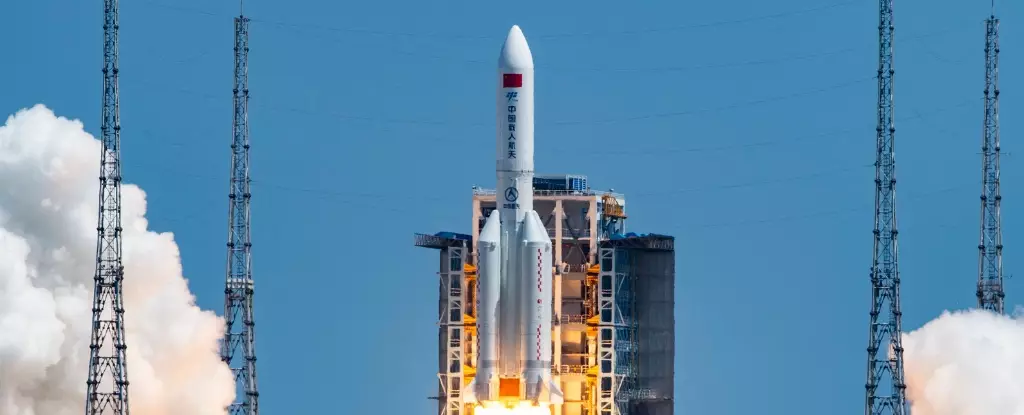Recently, a Chinese state-backed company, Shanghai Spacecom Satellite Technology, made headlines with the launch of its first 18 satellites. This initiative is part of a grand plan to establish a vast orbital network known as the “Thousand Sails Constellation,” aimed at competing with the likes of Starlink. The company’s goal is to have a total of 15,000 Low Earth Orbit satellites in operation by the year 2030, marking a significant milestone in China’s space exploration efforts.
The Thousand Sails Constellation project has drawn comparisons to Starlink, which is operated by Elon Musk’s SpaceX and currently consists of approximately 6,000 satellites. However, Musk has ambitious plans to expand the network to encompass a staggering 42,000 satellites. The Chinese project is just one of three major satellite networks planned in the country, with each expected to deploy 10,000 or more satellites. These satellites will orbit between 200 and 1,200 miles above Earth’s surface, positioning them in a similar range to Starlink satellites.
Shanghai Spacecom Satellite Technology has received backing from the Shanghai municipal government, along with funding from private investors and state-owned enterprises. This dual support structure highlights the collaborative efforts between the public and private sectors in advancing China’s space capabilities. The aim is not only to enhance technological prowess but also to promote self-reliance in critical industries, thereby reducing potential foreign influence and ensuring national security in times of global uncertainty.
Expansion Plans and Economic Impact
In addition to the Thousand Sails Constellation, two other major satellite networks are set to be launched in China. Collectively, these projects will see a total of 23,000 Chinese satellites deployed to provide internet services and support various communication needs. The growth of the country’s space industry is expected to be substantial, with estimates indicating that it could reach a value of $321 billion by 2024. This projection underscores the significant economic impact of China’s space initiatives and the potential for further growth in the years to come.
Market Response and Future Prospects
Following the successful launch of the 18 satellites, commercial aerospace stocks experienced a surge in value, with prices reaching their maximum daily limits. This positive market response reflects investor confidence in the potential of China’s space industry and the opportunities presented by ambitious projects such as the Thousand Sails Constellation. As the country continues to invest in space exploration and satellite technology, the sector is poised for further expansion and development, with far-reaching implications for China’s position in the global space race.


Leave a Reply